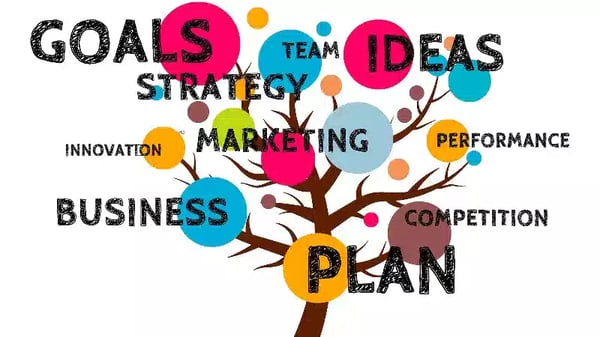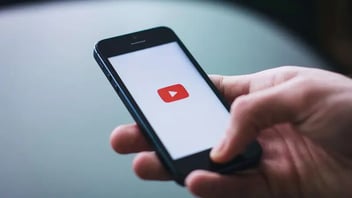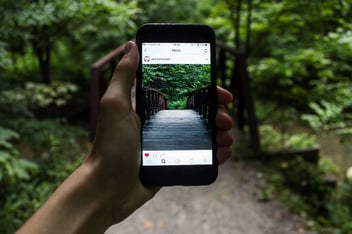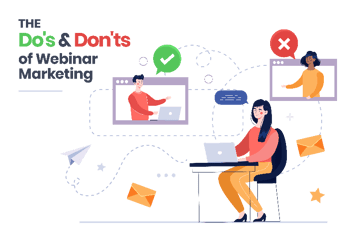Automating Your Conversion Funnel: DOs & DON'Ts
It takes time to nurture, generate, qualify, and convert leads into happy customers. An optimized conversion funnel process is essential for marketers hoping to increase sales. However, reducing the manual efforts necessary to move leads through the funnel is key to overall business success. An automated conversion funnel is a key tool in that process.
 Creating a sales funnel involves grooming, prep, and convincing prospects. Delivering high-quality, informative content at all stages of the funnel is crucial throughout the process as keeping them engaged with what they need at each stage.
Creating a sales funnel involves grooming, prep, and convincing prospects. Delivering high-quality, informative content at all stages of the funnel is crucial throughout the process as keeping them engaged with what they need at each stage.
With your guidance, your prospects can ease the funnel toward making a buying decision as efficiently as possible. And there is nothing more efficient than automation, which, aside from a relatively small amount of prep work, virtually eliminates manual work, leaving you with the time you need to focus on strategy and other areas of lead generation.
DO:
Understand your target audience.
Do this before you begin developing your funnel. Ask current customers, top sales associates, and key stakeholders about your audience's needs and wants. This information is beneficial to know why people want to invest in your brand.
Construct buyer personas.
Buyer personas increase your understanding of your ideal prospective customers based on their specific needs, demographics, pain points, and any questions they may stumble across as they glide through the funnel. Creating an ideal customer profile allows you to go beyond just your company and customers. It helps you use competitive research and accurate data to learn who buys your products.
Compare your pricing to competitors.
Find out what makes your company unique and leverage that to gain new customers. Learn your position in the market. Price comparing is an excellent place to start creating a content plan, constructing lead generation content, and building a marketing campaign.
Use a combination of time & behavior-based triggers.
Trigger marketing is considered event-based marketing, meaning you send messages or notifications at specific moments to answer an event. You must reach out to customers at the perfect time. Each event triggers a customized reply to specific users. For example, a time-based trigger would send a sequence of lead-nurturing emails at a specific time or interval. A behavior-based trigger would send an additional email or action if a visitor submits a lead form or similar behavior.
Personalize when possible.
Personalization helps create a human connection between your brand and your customer. You can create emails geared toward the customer that use their name throughout the email and have the feel of a message sent only to them from an individual rather than an automated system. The goal is that instead of feeling like a typical mass email from your brand, the customer feels they are getting a message from an actual team member.
Implement an AI-chatbot.
Chatbots allow you to invite interactions with new visitors automatically. You can make your visitors feel more valued by providing a more personalized and positive experience when they click on your website. Bots are there to assist your visitors and help navigate them through your site. The end goal is to utilize a chatbot to convert visitors into customers.
A/B test, then automate the winner.
A/B testing, sometimes called split testing, compares different versions of the same marketing assets and measures the performance differences to learn which performs better. A/B testing helps you decide which offers, words, or keywords – or day or time of sends – work best for your brand, allowing you to optimize your behaviors.
Automate lead-generating content.
Anchor content is a valuable tool that can be easily automated. A simple form fill can trigger it and ensures you give prospects enticing content while sharing their equally valuable data with your company. Gated content like an e-book, buyer's guide, or whitepaper is ideal for automating, and videos or webinars are common gated content that can convert to the right audience. Webinars directly engage with audiences and require an RSVP. They're often live, so prospects can interact directly in many cases and feel like they are getting VIP access to your brand. When creating good lead-generating content, consider your industry and offer something prospects cannot miss out on.
Build campaigns.
Once you have established lead-generating anchor content, you are ready to build an automated campaign. Create content that is for specific prospects' needs and pain points. Establish a final call to action, so a prospect can continue to learn more about your brand. Consider CTAs that schedule conversations, request demos, or compare solutions to help drive conversions. Before the final CTA, be sure your information illustrates each step in the buyer's journey when you go with time-based funnel automation or email drip campaigns. If a prospect engages with your content early in their journey, get them to the final CTA sooner rather than later. Defining campaigns is a core element of your Inbound Marketing Strategy.
DON'T:
There are common mistakes marketers make when trying to automate a conversion funnel. Your funnel is the most vital resource to help grow your business, and it, too, needs some nurturing. Your success relies on the efficiency of your funnel, so be sure you're continuously optimizing it, or you'll see diminishing returns. Failure to monitor campaigns, not following up with prospects, and not implementing an optimized call to action are among the most common mistakes companies make at the outset of automating processes. So avoid these common pitfalls that will stunt your growth.
Set it and forget it.
Many marketers use outside resources and online tools to help automate campaigns. Using these tools is a good start, but you can't just let the resources do all the work. Monitor your campaign frequently, ensuring everything is running smoothly. Creating an automated conversion funnel takes tremendous time and energy and requires a lot of fine-tuning to become its best.
Remember, it is okay – even encouraged – to tweak your campaign after it has gone live. This is where items like A/B testing for email campaigns come into play. Eliminate steps from your campaigns that don't perform, find out why they didn't, and replace them with something that does. Keep your content strategy active, timely, and relevant to your marketing and sales goals.
Be borderline "creepy" with over-personalization.
Personalization builds customer trust in your brand and begins your relationship. However, sending too much personal information about a customer could make them uncomfortable and lead to a lack of trust in your brand. Let your customers know you know who they are and what they need, but don't be weird.
Fail to follow up.
This is a common funnel mistake. Owners will put in a lot of time and effort constructing great landing pages to drive traffic to their website and even get people to subscribe. Then after that, the potential lead is not contacted.
It's vital to always follow up with an automated email to your lead and an automated email campaign that sends directly to your prospects after they've signed up. Continue communicating with your prospects and customers because offering customer service is vital to building lasting relationships.









Leave a Comment